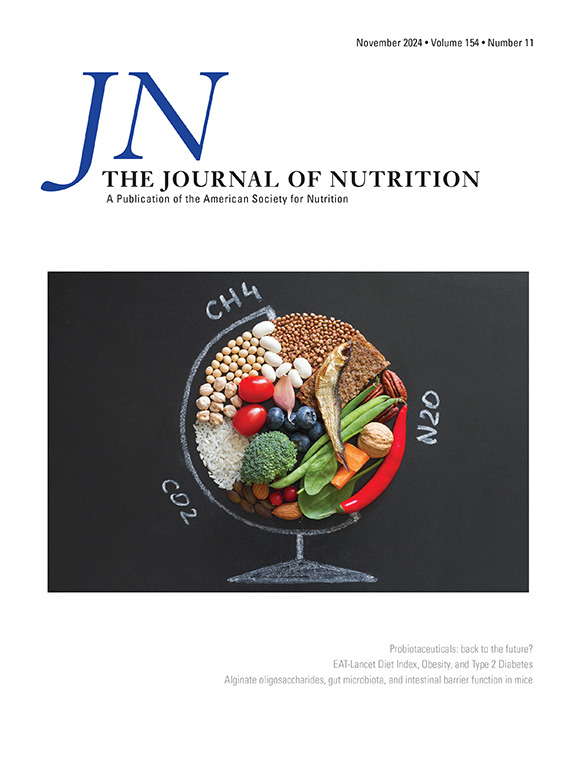皮肤和眼睛中类胡萝卜素含量的关系。
IF 3.7
3区 医学
Q2 NUTRITION & DIETETICS
引用次数: 0
摘要
背景:在皮肤和视网膜中测量的类胡萝卜素水平越来越多地被用作一般健康、功能和疾病的生物标志物。然而,它们是否可以直接互换尚不清楚。之前的几项比较成人和儿童的研究发现了不一致的结果。目的:本观察性研究的目的是评估皮肤和视网膜测量的类胡萝卜素水平之间的关系。方法:我们评估了两个测量之间的关系在一个延长的时间和多个测试会话。21名健康参与者(平均年龄= 27.0,SD = 9.8)被评估。黄斑类胡萝卜素采用基于定制异色闪烁光度法的标准方法进行测量。用压力介导反射光谱法测量皮肤类胡萝卜素。结果:视网膜和皮肤测量都显示出高可靠性(类内相关性>.90)和随时间的稳定性。当在5次测试中取平均值时,这两项测量具有中度但显著的相关性(r = 0.55, p = 0.01)。结论:皮肤类胡萝卜素水平约占视网膜类胡萝卜素密度变化的三分之一。皮肤和视网膜中的类胡萝卜素可能有许多共同的因素,既能促进也能干扰其积累。然而,每一种都可能有一些独特的预测特征作为生物标志物。因此,当使用生理性类胡萝卜素作为生物标志物时,结果应该决定是否测量皮肤或视网膜中的类胡萝卜素。本文章由计算机程序翻译,如有差异,请以英文原文为准。
The Relation Between Carotenoids Measured in the Skin and Eye
Background
Carotenoid amounts measured in the skin and retina are increasingly being used as biomarkers of general health, function, and disease. However, whether they are directly interchangeable is not clear. Several previous studies comparing the measures in adults and children have found inconsistent results.
Objectives
The objective of this observational study is to assess the relation between carotenoid amounts measured in the skin and retina.
Methods
We assessed the relation between the 2 measurements over an extended period and multiple testing sessions; 21 healthy participants were assessed (mean age, 27.0 y; SD, 9.8 y). Macular carotenoids were measured using a standard method based on customized heterochromatic flicker photometry. Skin carotenoids were measured using pressure-mediated reflection spectroscopy.
Results
Both retinal and skin measures showed high reliability (intraclass correlations > 0.90) and stability over time. The 2 measures, when averaged over 5 testing sessions, were moderately but significantly correlated (r = 0.55; P = 0.01).
Conclusions
Skin carotenoid amounts accounted for approximately a third of the variance in retinal carotenoid density. Carotenoids in both skin and retina likely share many factors that both promote and interfere with accumulation. Each, however, also likely has some unique predictive characteristics as a biomarker. Therefore, when using physiologic carotenoids as a biomarker, the outcome of interest should determine whether to measure carotenoids dermally or in the retina.
求助全文
通过发布文献求助,成功后即可免费获取论文全文。
去求助
来源期刊

Journal of Nutrition
医学-营养学
CiteScore
7.60
自引率
4.80%
发文量
260
审稿时长
39 days
期刊介绍:
The Journal of Nutrition (JN/J Nutr) publishes peer-reviewed original research papers covering all aspects of experimental nutrition in humans and other animal species; special articles such as reviews and biographies of prominent nutrition scientists; and issues, opinions, and commentaries on controversial issues in nutrition. Supplements are frequently published to provide extended discussion of topics of special interest.
 求助内容:
求助内容: 应助结果提醒方式:
应助结果提醒方式:


